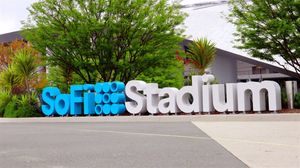As of Wednesday afternoon, Morgan Stanley analyst Adam Jonas has reduced his price estimate for Tesla TSLA by 40 basis points (–0.40%). Although he’s no longer a Bear, he’s still a Buy. In addition to that, his goal price only decreased by $100.
It doesn’t seem to be a huge problem at all. But investors may learn a lot from his analysis of Wall Street analysts’ thinking processes. Costs of financing a company have gone up, and this has led to a drop in prices. Not how many Tesla vehicles are sold, nor how many are not sold.
Before Tesla disclosed new figures, this article has already been updated with the most recent data. On or around July 2, Tesla (NASDAQ: TSLA) is expected to release its second-quarter delivery data. It will be a few weeks before the corporation announces its second-quarter results.
Due to Covid-19 disrupting manufacturing, the second quarter has been a wild ride. In the second quarter, Jonas expects 270,000 units to be delivered, down from 316,000 units.
There will be a smaller gross profit margin if there are fewer deliveries In place of Jonas’ previous projection of 25.8 percent, he now expects margins, excluding regulatory credits, to be 24.6 percent.
However, none of these reductions affected the price objective. A decrease in the weighted average cost of capital was the driving force behind this.
With the WACC now at 9.0% rather than 8.5%, Jonas lowered the target to $1,200 from $1,300. An “increase in WACC….accounts for almost 100% of the price target reduction” of 0.5 percent.
It has the air of a business school acronym, WACC. Yes, it is. When calculating a company’s WACC, the cost of debt and equity are taken into consideration. Analysts and investors use the WACC to calculate things like discounted cash flows, which are employed in the valuation of companies.
It’s not difficult to calculate the true cost of one’s debt. Bondholders and lenders alike get interest payments from companies. The rate is the price. It is more difficult to estimate the cost of equity. What investors consider to be a reasonable rate of return on a certain company is known as the dividend yield. Stock volatility and the yield on government bonds are two factors that have an impact on the cost of equity.
The risk-free return is represented by the yield on government bonds. Investing in Treasuries is safe and secure for investors. It’s possible to print money at the government’s printing press. Stocks, which carry a high degree of risk, should always have a healthy profit margin compared to government bonds.
Jonas had this to say in his post: Because of the “higher risk-free rate,” WACC went up. Because government bonds offer a higher yield, equities must also have a higher return. In addition, cheaper pricing for the same service or product equals higher returns.
It’s all quite scholarly here. However, it is how analysts change their models to account for things like increasing interest rates and other odd events.
The noon price target decrease doesn’t seem to have much of an effect on Tesla shares. It’s not only the news that’s hurting the stock; the market has also taken a hit.
Tesla’s stock price ended the day at $708.26, down only 0.4% from its opening price. Since Wednesday, both the S&P 500SPX-0.13 percent and the DJIA-0.15 percent have fallen by 0.01 percentage points and 0.02 percentage points respectively.
About $910 is the average analyst price objective for Tesla shares. In April, soon after the company’s first-quarter earnings were announced, the target price for each share reached about $1,000.
The post Morgan Stanley Analyst, Adam Jonas Has Reduced His Price Estimate for Tesla by 40 Basis Points appeared first on Best Stocks.




